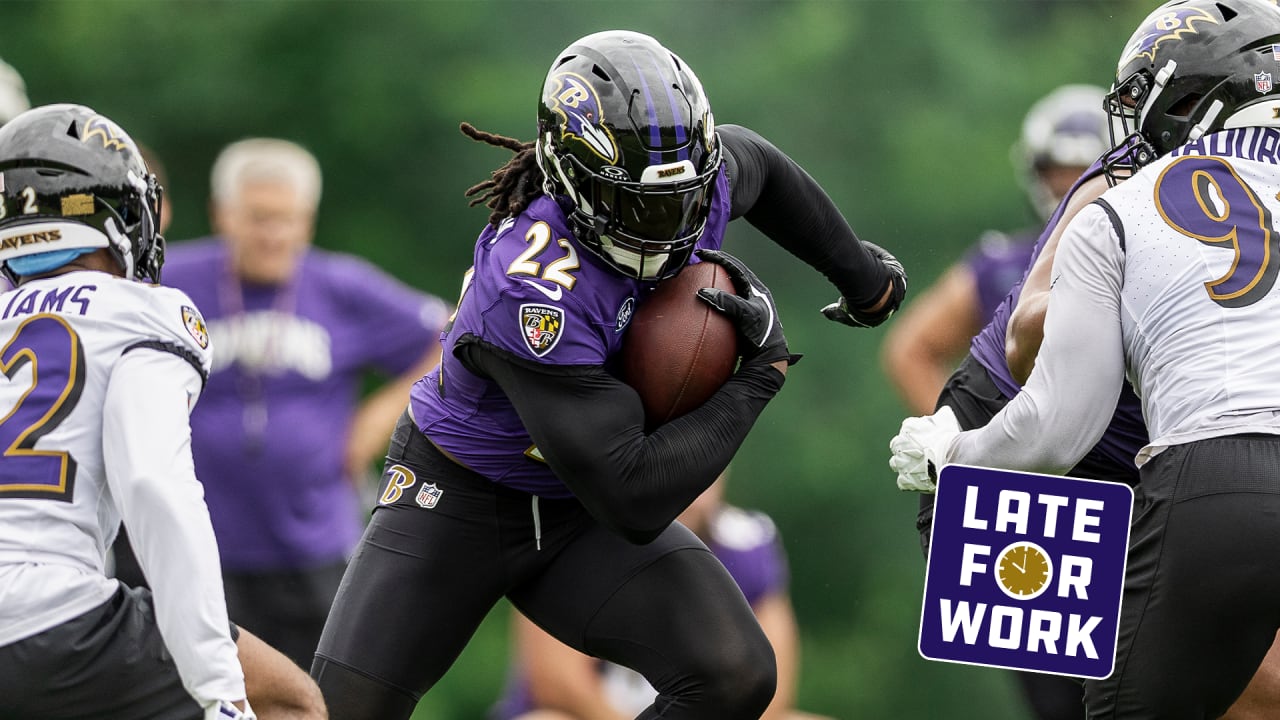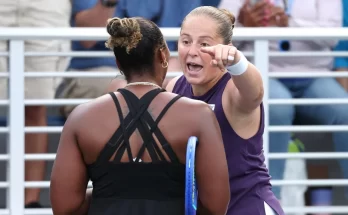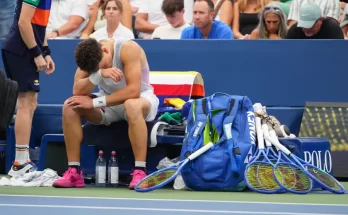Analysts Call Ravens’ Offense ‘Elite’—But Here’s the Shocking Reason Fans Still Aren’t Convinced
The Baltimore Ravens have long been known for their defensive dominance, a tradition that has defined the franchise for decades. However, in recent years, the narrative has started to shift. With Lamar Jackson leading the charge, the conversation surrounding the Ravens has begun to focus heavily on their offensive firepower. This offseason, analysts across the league have gone as far as to label the Ravens’ offense as elite, a claim that would have sounded far-fetched a few years ago. Yet, despite this bold proclamation, doubts still linger—particularly when it comes to the wide receiver position. It’s a fascinating paradox: how can an offense be deemed elite when one of its most important units remains under scrutiny?
The belief in Baltimore’s offensive potential starts, of course, with Lamar Jackson. The former MVP remains one of the most electrifying talents in football, a dual-threat quarterback capable of dismantling defenses with his legs and his arm. Jackson has matured significantly since his breakout season in 2019, evolving into a more polished passer while retaining his ability to create magic outside of the pocket. His presence alone elevates the Ravens’ offense into dangerous territory, forcing defensive coordinators to account for every blade of grass. But an elite offense cannot revolve around one player alone, and Baltimore has worked tirelessly to surround Jackson with weapons that can complement his skill set.
At the heart of this evolution is a shift in philosophy. For years, the Ravens leaned heavily on their run game, often ranking among the league leaders in rushing attempts and yards. While that ground-and-pound style produced wins, it also made the offense predictable and limited their ceiling in the postseason. Recognizing this, the organization invested in reshaping their offensive identity. They hired Todd Monken as offensive coordinator, a move that signaled a clear intent to modernize the passing game. Under Monken’s guidance, the Ravens began implementing concepts that spread the field, utilized motion, and created mismatches in space. The result has been an offense that looks more balanced and, at times, explosive.
The backfield remains a strength, anchored by a healthy Lamar Jackson and supported by dynamic runners capable of taking over games. Baltimore’s rushing attack is still lethal, but now it operates as part of a more diversified scheme rather than the sole engine of the offense. This has allowed Jackson to flourish as a passer, silencing critics who claimed he couldn’t succeed from the pocket. His ability to read defenses, deliver accurate throws under pressure, and manage the game has improved dramatically, which is why many analysts believe Baltimore’s offensive ceiling is higher than ever. Yet, for all these improvements, the conversation inevitably circles back to the receivers—a position group that continues to raise eyebrows.
On paper, the Ravens have invested significantly in their wide receiver corps. They signed veterans, spent high draft picks, and attempted to build a supporting cast worthy of their star quarterback. Names like Rashod Bateman, Zay Flowers, and Odell Beckham Jr. have all worn purple and black with the hope of transforming this unit from a liability into a strength. Flowers, in particular, showed flashes of brilliance as a rookie, using his speed and agility to create separation and generate big plays. Bateman, when healthy, brings size and reliability to the passing attack. Yet, questions persist because this group has struggled with inconsistency and injuries, preventing them from becoming the dominant force fans envisioned.
Part of the skepticism stems from history. The Ravens have rarely been a team known for elite wide receiver play. While other franchises routinely trot out Pro Bowl-caliber pass-catchers, Baltimore’s identity has always leaned elsewhere. That reputation is hard to shake, even as the front office attempts to rewrite the narrative. Critics argue that until the Ravens field a receiver who can truly dictate coverage—someone who demands double-teams and consistently wins contested catches—the offense will remain limited in critical moments. The fear is that come playoff time, when defenses tighten and every yard is earned, the lack of an alpha receiver could rear its head.
Yet, dismissing the Ravens’ offensive potential because of these concerns might be shortsighted. Football, after all, is not a one-dimensional game. Elite offenses are not built solely on the backs of star wideouts. Baltimore’s scheme thrives on spreading the ball, using tight ends like Mark Andrews as matchup nightmares and creating opportunities for running backs to contribute in the passing game. Andrews, when healthy, remains one of the best tight ends in football, a security blanket for Lamar Jackson and a red-zone weapon that few defenses can neutralize. Add to that the mobility and creativity Jackson brings, and you have an offense that can attack in multiple ways—even without a traditional No. 1 receiver dominating the stat sheet.
Another factor working in Baltimore’s favor is chemistry. The longer Jackson operates within Monken’s system, the more comfortable he becomes, and that familiarity breeds confidence and precision. We saw glimpses of that last season when the Ravens carved up top defenses with efficiency, even when their receiving corps wasn’t at full strength. Imagine what could happen if Flowers takes the next step, if Bateman stays healthy, and if new acquisitions integrate seamlessly. Suddenly, the narrative shifts from doubt to dominance, and the label of “elite” feels justified.
Of course, projections mean little without results. The Ravens play in a brutally competitive AFC, where offenses like the Kansas City Chiefs, Buffalo Bills, and Cincinnati Bengals set the standard for aerial fireworks. To truly join that tier, Baltimore must prove they can consistently score against elite defenses, particularly in January. That means turning third-and-long into conversions, winning one-on-one battles outside, and delivering in clutch moments when the margin for error disappears. The tools are there; the execution will determine whether this offense lives up to the hype.
For fans, the doubts surrounding the receivers are both understandable and exaggerated. It’s easy to fixate on perceived weaknesses, especially when the rest of the roster looks so strong. But perhaps the Ravens don’t need a traditional No. 1 wideout to thrive. Perhaps their version of “elite” looks different—less about gaudy individual stats and more about collective efficiency, versatility, and adaptability. If Lamar Jackson continues to play at an MVP level, if the offensive line holds up, and if Monken’s scheme evolves as intended, the Ravens’ offense could very well become the nightmare that opponents fear most.
In the end, the debate over whether Baltimore’s offense deserves the “elite” label might persist all season, but one thing is undeniable: this unit has come a long way from the days when critics dismissed them as one-dimensional. They have the quarterback, the play-caller, the supporting pieces, and the confidence to challenge the NFL’s offensive hierarchy. Whether or not the receivers silence their doubters remains to be seen, but if this offense fires on all cylinders, the rest of the league will have no choice but to take notice. And perhaps, just perhaps, the term “elite” will no longer feel like a projection—it will feel like reality.



